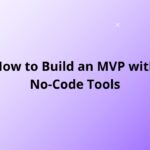Launching a Minimum Viable Product (MVP) is a proven strategy to validate ideas before full-scale development. Many successful companies started with an MVP, gathered user feedback, and iterated to build billion-dollar businesses. Here are some notable case studies of startups that began with an MVP and grew into industry giants.
1. Airbnb: Testing the Market with a Simple Website
The MVP Approach:
In 2007, Airbnb’s founders, Brian Chesky and Joe Gebbia, struggled to pay rent. They decided to rent out their apartment by creating a simple website that listed their place with photos. Their MVP focused on:
-
A basic website to connect hosts and travelers.
-
Direct bookings without a complex platform.
-
Initial users from Craigslist postings.
Outcome:
The MVP validated the idea that travelers were willing to rent private spaces. With feedback from early users, Airbnb expanded into a global marketplace with millions of listings worldwide.
2. Dropbox: A Video-Only MVP
The MVP Approach:
Instead of building a full product, Drew Houston and Arash Ferdowsi launched a simple explainer video demonstrating how Dropbox worked. The MVP focused on:
-
A 3-minute demo video showing file synchronization.
-
A waitlist for early access to gauge interest.
-
No actual product at the time—just concept validation.
Outcome:
The video led to 75,000 sign-ups overnight, proving demand. With user feedback, Dropbox built its product and became a multi-billion-dollar cloud storage company.
3. Uber: A Simple Ride-Booking App for One City
The MVP Approach:
Uber (formerly UberCab) started as a basic app connecting riders with black car drivers in San Francisco. Their MVP included:
-
A simple mobile interface for ride booking.
-
A limited network of drivers in one city.
-
Direct payments through the app.
Outcome:
The MVP proved the on-demand ride-sharing model worked. After refining based on user demand, Uber expanded globally and transformed urban transportation.
4. Zappos: Selling Shoes Without Inventory
The MVP Approach:
Zappos founder Nick Swinmurn wanted to test if people would buy shoes online. Instead of investing in inventory, he:
-
Took pictures of shoes from local stores.
-
Listed them online and waited for orders.
-
Purchased and shipped manually when a customer ordered.
Outcome:
This approach validated demand without upfront inventory costs. Zappos later scaled into a billion-dollar online shoe retailer, acquired by Amazon.
5. Instagram: Pivoting from a Check-In App
The MVP Approach:
Before Instagram became a photo-sharing giant, it started as Burbn, a check-in app similar to Foursquare. The founders realized users loved photo-sharing more than check-ins, so they:
-
Stripped down Burbn to focus only on photos.
-
Added filters to enhance images.
-
Made sharing simple and engaging.
Outcome:
Instagram’s refined MVP quickly gained traction, leading to 1 million users in 2 months and later a $1 billion acquisition by Facebook.
Key Takeaways from These MVPs
-
Start Small – All these companies focused on one key problem and tested their ideas with a basic solution.
-
Leverage Existing Tools – Many MVPs relied on manual processes (Zappos, Airbnb) before automation.
-
Gather Real User Feedback – Listening to early users helped shape product improvements and pivots.
-
Scale Gradually – Most started in a single market (Uber, Airbnb) before expanding.
Conclusion
Building an MVP is an effective way to test ideas, minimize risks, and refine products before a full-scale launch. As these case studies show, starting simple and iterating based on real-world feedback can lead to massive success.
Are you working on an MVP? Let us know your journey in the comments!



